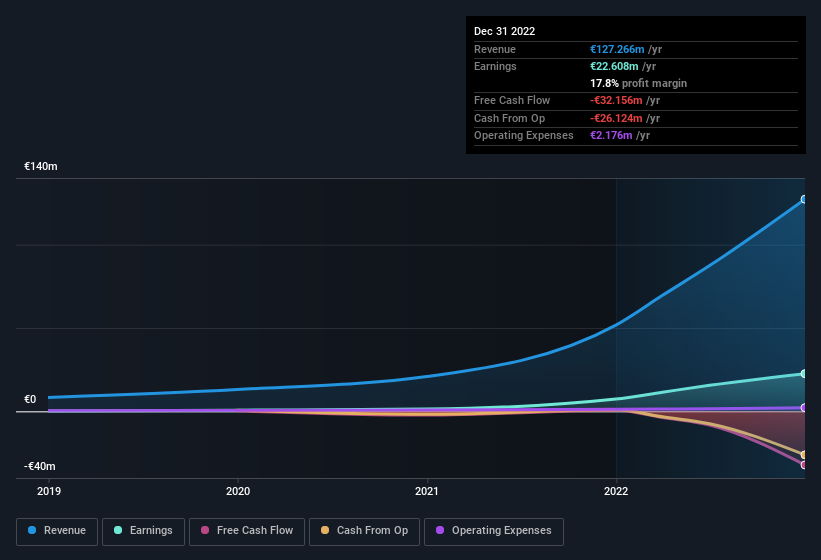
Last week's profit announcement from Energy S.p.A. (BIT:ENY) was underwhelming for investors, despite headline numbers being robust. We think that the market might be paying attention to some underlying factors are concerning.
See our latest analysis for Energy

Zooming In On Energy's Earnings
As finance nerds would already know, the accrual ratio from cashflow is a key measure for assessing how well a company's free cash flow (FCF) matches its profit. To get the accrual ratio we first subtract FCF from profit for a period, and then divide that number by the average operating assets for the period. The ratio shows us how much a company's profit exceeds its FCF.
That means a negative accrual ratio is a good thing, because it shows that the company is bringing in more free cash flow than its profit would suggest. While having an accrual ratio above zero is of little concern, we do think it's worth noting when a company has a relatively high accrual ratio. That's because some academic studies have suggested that high accruals ratios tend to lead to lower profit or less profit growth.
For the year to December 2022, Energy had an accrual ratio of 1.36. Statistically speaking, that's a real negative for future earnings. To wit, the company did not generate one whit of free cashflow in that time. Over the last year it actually had negative free cash flow of €32m, in contrast to the aforementioned profit of €22.6m. We saw that FCF was €710k a year ago though, so Energy has at least been able to generate positive FCF in the past.
That might leave you wondering what analysts are forecasting in terms of future profitability. Luckily, you can click here to see an interactive graph depicting future profitability, based on their estimates.
Our Take On Energy's Profit Performance
As we discussed above, we think Energy's earnings were not supported by free cash flow, which might concern some investors. As a result, we think it may well be the case that Energy's underlying earnings power is lower than its statutory profit. At the end of the day, it's essential to consider more than just the factors above, if you want to understand the company properly. If you'd like to know more about Energy as a business, it's important to be aware of any risks it's facing. Case in point: We've spotted 2 warning signs for Energy you should be aware of.
This note has only looked at a single factor that sheds light on the nature of Energy's profit. But there are plenty of other ways to inform your opinion of a company. Some people consider a high return on equity to be a good sign of a quality business. While it might take a little research on your behalf, you may find this free collection of companies boasting high return on equity, or this list of stocks that insiders are buying to be useful.
Valuation is complex, but we're here to simplify it.
Discover if Energy might be undervalued or overvalued with our detailed analysis, featuring fair value estimates, potential risks, dividends, insider trades, and its financial condition.
Access Free AnalysisHave feedback on this article? Concerned about the content? Get in touch with us directly. Alternatively, email editorial-team (at) simplywallst.com.
This article by Simply Wall St is general in nature. We provide commentary based on historical data and analyst forecasts only using an unbiased methodology and our articles are not intended to be financial advice. It does not constitute a recommendation to buy or sell any stock, and does not take account of your objectives, or your financial situation. We aim to bring you long-term focused analysis driven by fundamental data. Note that our analysis may not factor in the latest price-sensitive company announcements or qualitative material. Simply Wall St has no position in any stocks mentioned.
About BIT:ENY
Energy
Designs and distributes energy storage systems for residential, commercial, and industrial applications worldwide.
Excellent balance sheet with reasonable growth potential.
Market Insights
Community Narratives




